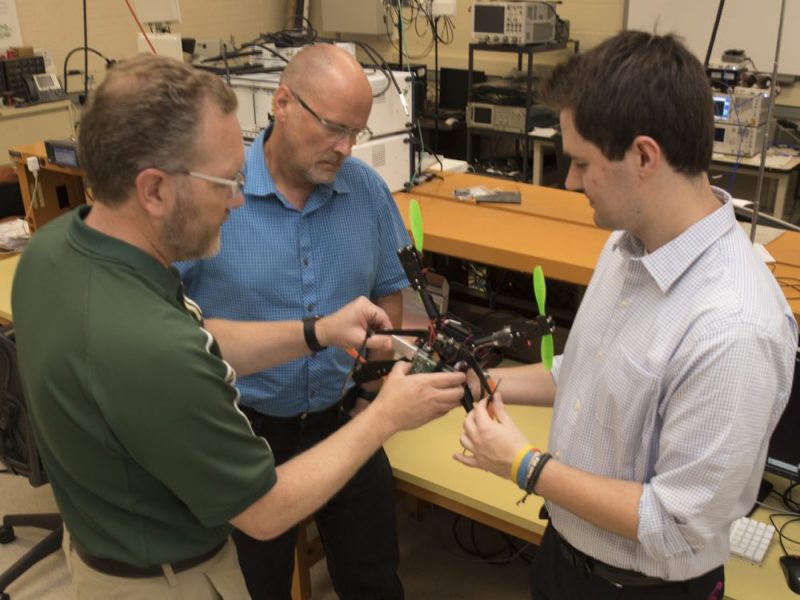Wireless Communications Interface and Services for Drone Swarms

Principal Investigator: Professor Laneman
AWaRE REU Researcher: Bob Schenck, Valparaiso University
Project Description: One of the things that makes drones so popular is that a user can communicate with the drone remotely. These communications send information, such as position or battery level, and commands, which instruct the drone in its movements. Drones become dependent on these communications in order to maintain a safe environment for use. By adding an onboard computing and wireless platform to the drone, we hope to advance and expand upon the communication framework available to the drone. This will include several wireless interfaces. A 4G LTE cellular connection will be established for the drone to communicate to the cloud and ultimately establish drone-to-ground communications. Alongside that, an infrastructure less Wifi network is configured on the computer for drone-to-drone communications. The onboard computer also acts as a communications manager for the drone’s wireless interfaces. This allows the drone to monitor the strength of each wireless network and controls the messages broadcast on each. These interfaces and the data we collect from them will allow us to better operate drone swarms and begin implementation of detect-avoid protocols. We aim to conduct tests of the network to examine the strength, speed, range, and other parameters to each medium of communication.
Finding: Our goal for the AWaRE REU program was to configure a flexible wireless communications manager with multiple interfaces (LTE, WiFi) that would enable both drone-to-ground and drone-to-drone communications experiments. The REU student investigated options for the LTE interface on a Raspberry Pi 3B embedded computer, and prototyped a solution based upon a Verizon LTE USB dongle for drone-to-ground communication in collaboration with a staff software engineer. The team also established a UDP broadcast network over WiFi for drone-to-drone communications. Preliminary measurements were collected on signal quality and packet latency as a function of range. We are expanding upon these measurements in order to prototype a distributed detect-and-avoid protocol in collaboration with our industry partner, InterDigital, and planning to publish the results next Spring. More generally, the software engineer will continue to evolve the control messaging and data streaming software architecture to set the stage for follow-on REU projects.

